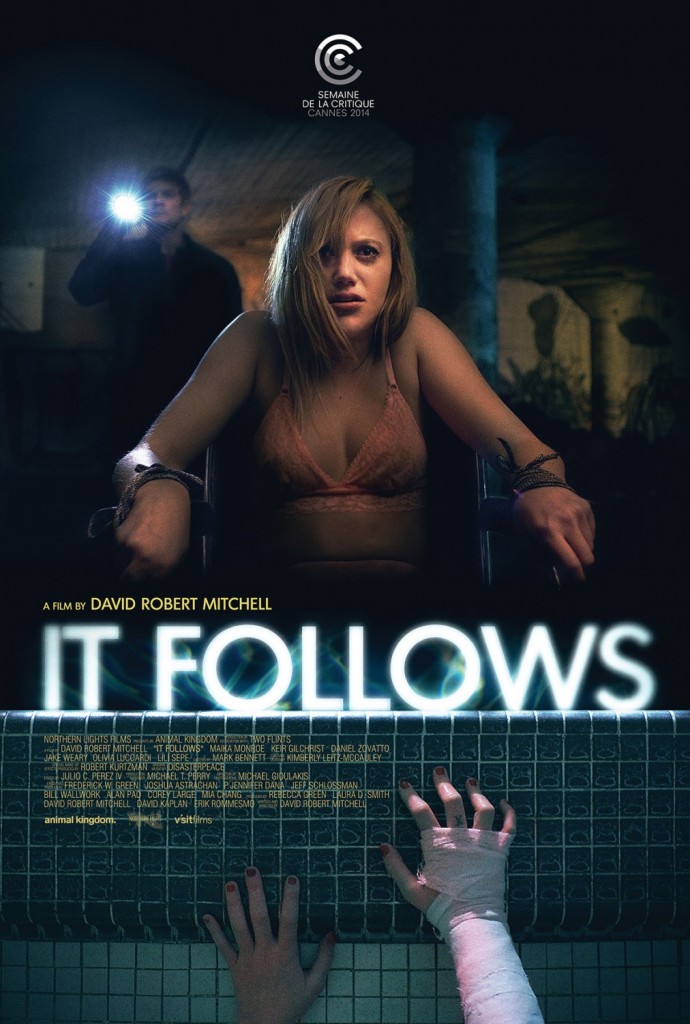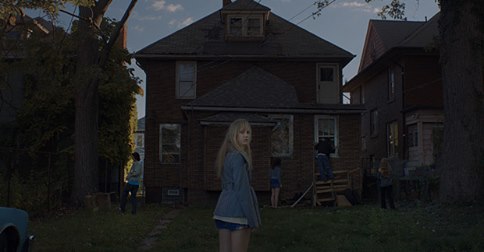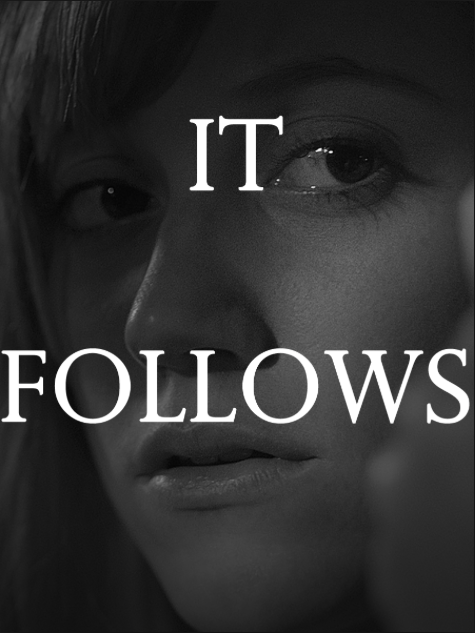 With slashers, I’ve always been in John Carpenter’s camp: these people aren’t getting punished for having sex, they’re getting killed while naked simply because that’s when they’re the most vulnerable, the least likely to be looking around the room.
With slashers, I’ve always been in John Carpenter’s camp: these people aren’t getting punished for having sex, they’re getting killed while naked simply because that’s when they’re the most vulnerable, the least likely to be looking around the room.
However, like Jim Rockford says, If fifty people tell you you’re drunk, then maybe it’s time to lie down, right? Meaning, when the slasher was busy getting codified back in the seventies (Black Christmas, Jaws, Texas Chainsaw Massacre, Halloween, on up, to, say, Tourist Trap and Friday the 13th and Just Before Dawn and The Burning), this killed-for-having-sex dynamic wasn’t so much in play. But it soon would be. Just because everybody was saying it. And, really, I don’t know if the critics started pushing that first—Clover & Co.—or if all the films trying to cash in on Halloween etc made it real. Or if that was just the talk around the popcorn machine, and soon it was real enough that Scream and Cherry Falls could even play with it some, invert it, hang it out to dry, throw it against the wall to see what sticks.
However it happened, it quickly got to the point where killed-for-having-sex, that was considered de rigueur, pretty much, or a delimiting factor, anyway—see Behind the Mask: Leslie Vernon, say. If you don’t have some of that going on in your slasher, then how can you even call it a slasher?
It’s not ideal, and it goes a long way towards re-inscribing America’s preoccupation with villainizing sex and thus custom-making a set of people with their urges all tied up with guilt, that expresses in way unhealthy ways . . . but, as far as slashers at the box office go (I’m likely not qualified to talk about society as a whole), killed-for-having-sex, that’s a core characteristic here in 2014. It’s just assumed.
David Robert Mitchell’s It Follows, very much in keeping with Eric England’s recent Contracted, knows this. What if instead of getting chainsawed in half while under the sheets, you instead caught a different, creepier (or, as in Contracted, grosser) version of a ‘chainsaw?’
Once there’s a trailer, I won’t have to say this, but I trust that I’m not spoiling it, either, as this is the description already posted on IMDb:
For 19-year-old Jay, fall should be about school, boys and weekends out at the lake. But after a seemingly innocent sexual encounter, she finds herself plagued by strange visions and the inescapable sense that someone, or something, is following her. Faced with this burden, Jay and her teenage friends must find a way to escape the horrors that seem to be only a few steps behind.
That’s a pretty solid write-up: Jay has sex, and pays for it with a very persistent, very implacable haunting, one kind of in league with the infected in Bentley Little’s The Walking, except these sometimes-invisible juggernauts (they always walk the shortest path right to you), they shop at the same outlet mall Samara does, I think.
And it completely works. It Follows is very effective horror. And, just like Final Destination taught us, the slasher in your slasher doesn’t necessarily need a trademark face or mask or outfit or weapon. Granted, the studios might grumble, as merchandising opportunities are somewhat limited with It Follows, but within the movie, within the story, this anonymity, it significantly ups the dread. And that’s where real longevity comes from.

And, yes, I’m fully aware that nearly every time the slasher turns out to be a ghost, then the story loses that slasher dynamic, and becomes a “We’ve got to do research and find out why this ghost is killing us, and that research will give us the tools to beat it, finally”-kind of thing, which is always disappointing, even in the steady hands of a del Toro. Only time I’ve seen it work in a slasher, I think? Prepare your boos: Texas Chainsaw 3D. There Leatherface isn’t a ghost—a shell of a person, yes, the ruined husk of a human—but still, that dangerous dynamic almost surfaces, to undercut the scare: he’s a victim, he was made, he doesn’t have any choice but to be doing this. The Francis Dollarhyde syndrome, yes.
It Follows doesn’t submit to this. Sometimes when you encounter a hungry bear in the woods, you just run, and run, and run some more, right? You don’t have to go back to the woods of yore to figure out why this bear has a taste for flesh. It’s enough that it does.
The walkers in It Follows, they definitely do. And, I should say ‘walker,’ singular, but once you’ve seen it, you might go plural as well.
And, to keep this from being a ghost story—to insist on its essential slasheriness, here’s some of the other characteristics we’ve come to know and love, that are present in It Follows:
- all teens
- a distinct final girl
- no helpful authority figures
- “let’s go out to the cabin, cool?”
- that killed-for-having-sex thing
- false victory
- set-piece deaths
- limited locations
- high gore quotient (that opening scene is beautiful, and it puts me in mind of Mungo Lake, which never hurts)
- about an hour and a half run-time
- low-budget (this so often allows the vision to remain pure, not killed-with-notes)
- mostly unknown actors (so we don’t know who to invest in)
And, the camera-work here, man. You know how Argento will drag a crane-shot agonizingly slowly up a set of stairs, then go to this window, then that? David Robert Mitchell has to be a fan of that. And he knows how horror works. As far as the camera eye goes, this is the best horror I’ve seen since You’re Next, easy.

Also, to come back to the golden age of slashers, he remembers that one driving principle: keep it simple, dude. Horror, with its need to persistently escalate, is so easy to let get complicated. It’s what you feel you have to do, the trade-in you make in order to continually pull the rug out from under your audience’s feet.
It Follows is painfully, elegantly simple: girl has sex, catches an STD that manifests as people plodding behind her, trying to kill her, and she now has to get away from them in whatever way she can. Along the way she doubts her sanity, sure—is this just a projection of guilt?—but she finally gets to the same place Nancy does in A Nightmare on Elm Street, the same place all final girls finally get to: it’s time to turn the tables. It’s time to set some traps. It’s time to get brutal. You don’t survive just by running. Running’s only prolonging the inevitable. At some point, you turn and fight.
Where It Follows slightly, and maybe necessarily, diverges from the typical slasher development, it’s in the bodycount. David Robert Mitchell isn’t putting up Terminator numbers, here. Rather—and this is why I say ‘necessary’—he’s maybe acknowledging that each life in a horror movie, it actually counts (something I never cued into myself until The Killing). And so he’s thrifty with them. And, the effect of this? It ups the tension, it ratchets up the suspense.
It’s a trick I think I like.
Another way It Follows might be diverging from the typical slasher, it’s in what Joe Bob Briggs used to call the ‘breast count,’ back in the barely post-drive-in days, the just-after-42nd-street period. There’s no real nudity in It Follows. Unlike Cabin in the Woods—and Whedon and Goddard were both pretty uncomfortable with that nudity, by all accounts—unlike You’re Next, which just gets the nudity out of the way in the opening ‘sacrifice.’
Still, each of those films, you felt they were doing their nudity in a kind of compulsory manner. Like, the slasher audience expects it, we’ve ‘got’ to do it.
Things are changing, though. For the better.
 Back in the golden age of the slasher? You watch them, and you kind of feel sorry for all these girls, fresh off the bus, being told to take their shirts off. It’s exploitation, and everybody knows it, and everybody just plays along, because it’s a convention of the genre. Or, because it’s going to pull in a few more box-office dollars, possibly, or at least up the odds of this getting picked up for late-night cable, for that demographic of the audience that can’t get into R-rated movies yet.
Back in the golden age of the slasher? You watch them, and you kind of feel sorry for all these girls, fresh off the bus, being told to take their shirts off. It’s exploitation, and everybody knows it, and everybody just plays along, because it’s a convention of the genre. Or, because it’s going to pull in a few more box-office dollars, possibly, or at least up the odds of this getting picked up for late-night cable, for that demographic of the audience that can’t get into R-rated movies yet.
Still, the real danger of all that happening back-when, it was that it warped the core dynamic of the slasher. Not so much towards killed-for-having-sex, but in the ‘women become disposable once they’ve taken their shirts off’-way. Which I’m not endorsing. I do love the slasher above all other genres, but that doesn’t mean everything it does is automatically right, either. That is what I identify as finally more operant than killed-for-having sex, though: in so many of the golden age slashers, all the suspense associated with a female character, it evaporates once she takes her shirt off. Yes? I mean, there’s slashers that don’t conform, of course—Tobe Hooper’s Fun House, doesn’t it start with the final girl in the shower, and a very lingering camera?—but by and large, most of them consider their female characters worthless once the nudity’s over. Which isn’t a healthy dynamic to just accept, as we use those same eyes in the real world, I’m pretty sure.
It Follows—much like Scream, and Nightmare on Elm Street (both Craven . . .)—doesn’t accept that. And not just because its cast is underage, possibly (I didn’t look them up). The only nudity we see in it, it’s of the distinctly uncomfortable variety, very similar to the much-postered nudity Romero gave us 68. It’s skin we don’t want to see, please. I’m thinking Zelda in that back room, yes. And, you can tell David Robert Mitchell is sticking to this because, come on, in a movie where sex functions like the passed-on VHS tape in The Ring, there’s an opportunity for nudity every other scene, pretty much. But he always has his characters keep their bras on. As in soap operas, they always pull the covers over them before getting started.
I hope to see more of this. And, with this, I hope to start seeing more slashers as well, please. They’re coming back, think? Yes? Yes.
So, to sum up: David Robert Mitchell’s It Follows is both the freshest concept to come down the horror pike in a while, and it’s horror that really and legitimately gets to you. It’s horror you—and this is so important, as Psycho taught us—it’s horror you take with you.
You’re going to have certain doubts after It Follows. Certain suspicions.
Only the best horror ever does that.
[ I’ll try to remember to put the trailer here when the trailer’s real ]

 is the NYT bestselling author of 30 or so books, +350 stories, some comic books, and all this stuff here. He lives in Boulder, Colorado, and has a few broken-down old trucks, one PhD, and way too many boots. More
is the NYT bestselling author of 30 or so books, +350 stories, some comic books, and all this stuff here. He lives in Boulder, Colorado, and has a few broken-down old trucks, one PhD, and way too many boots. More